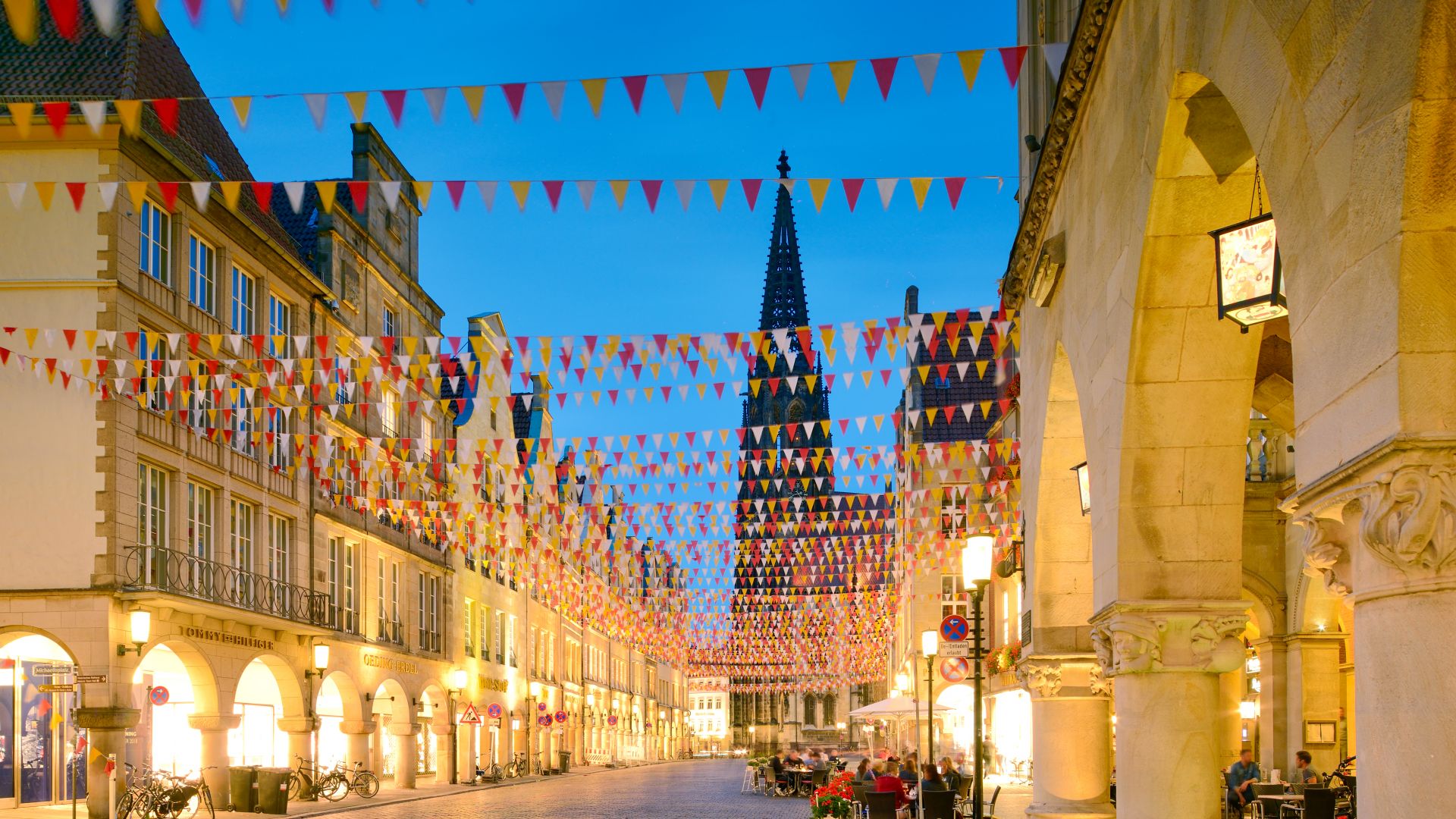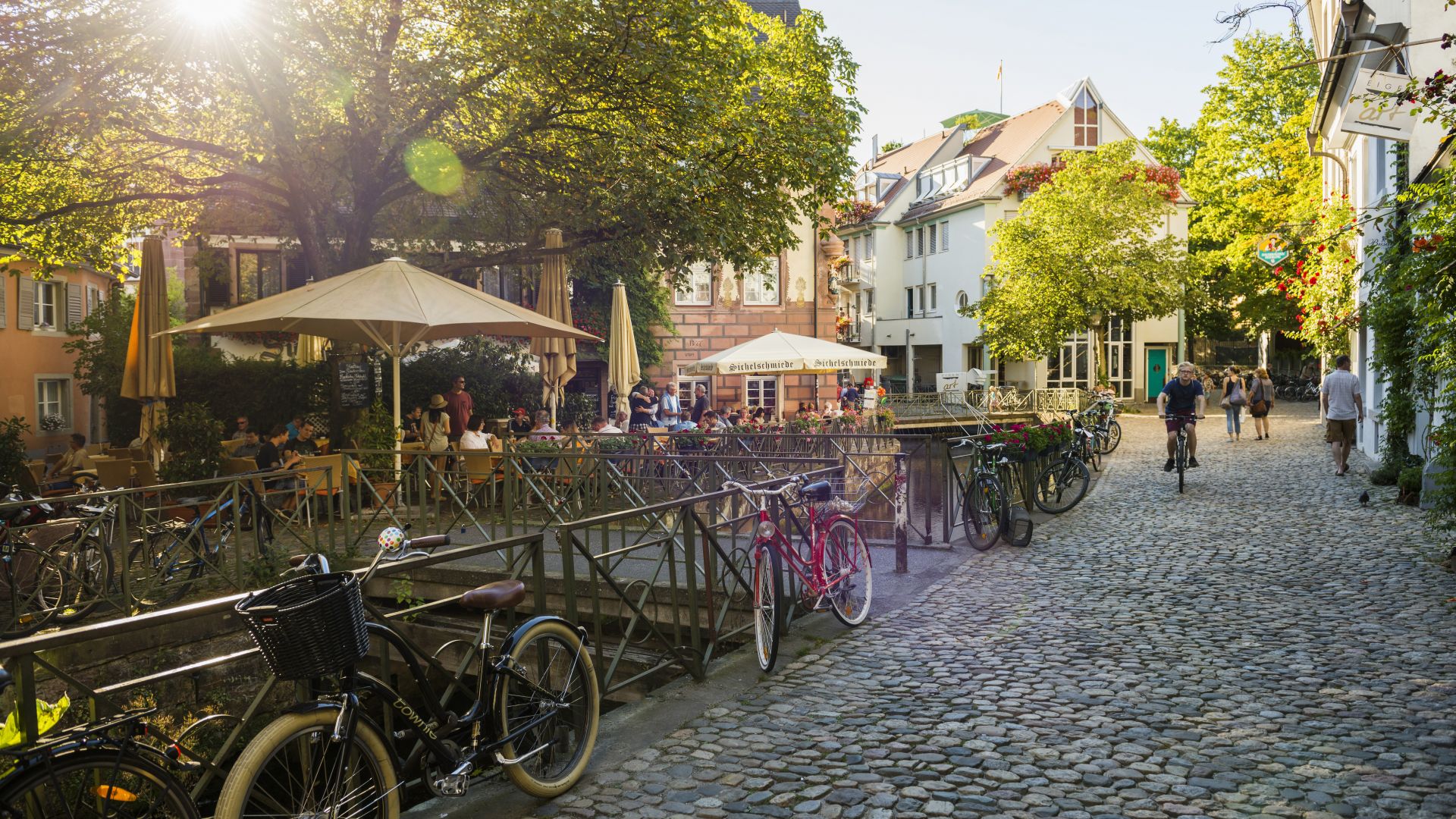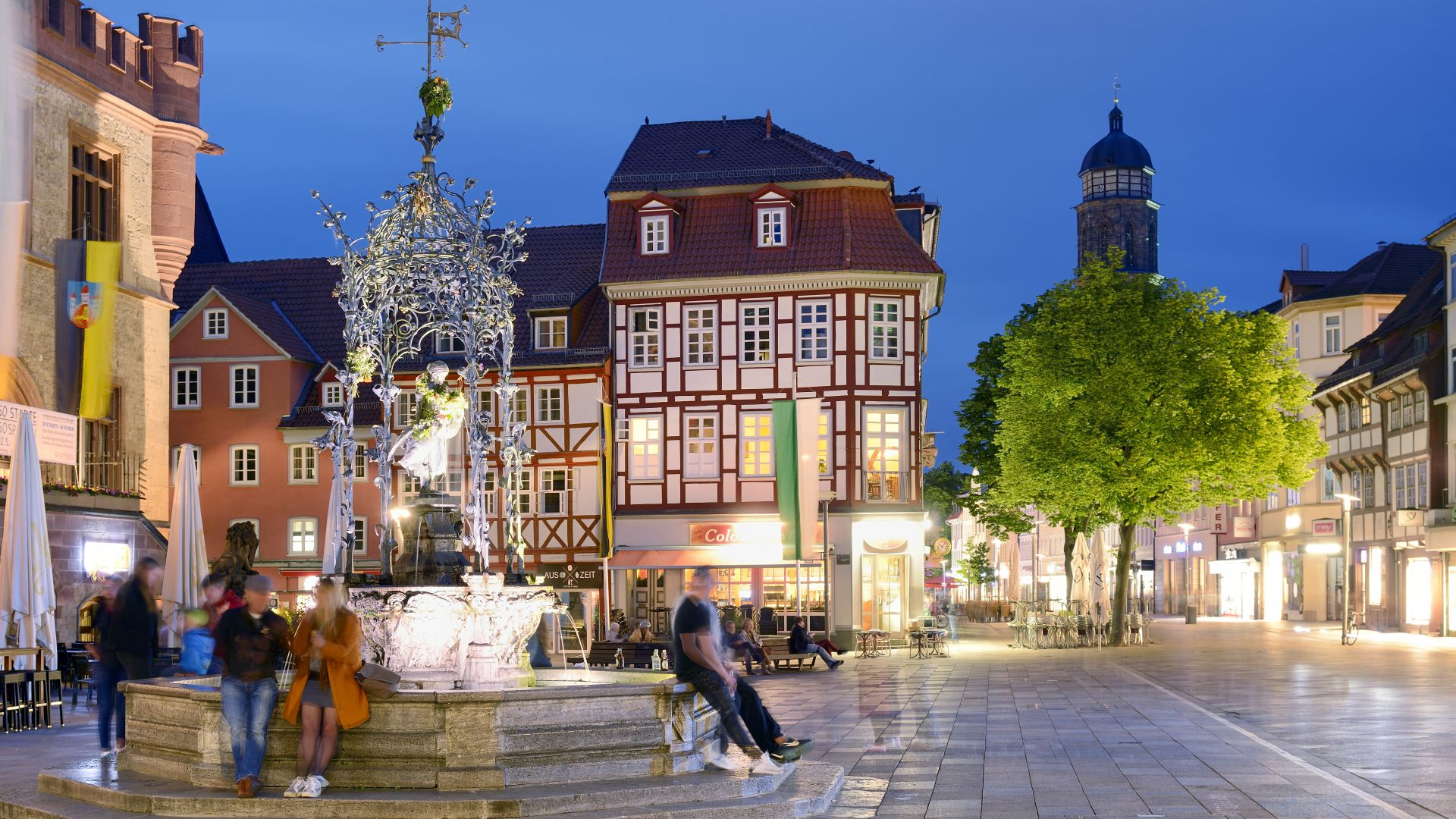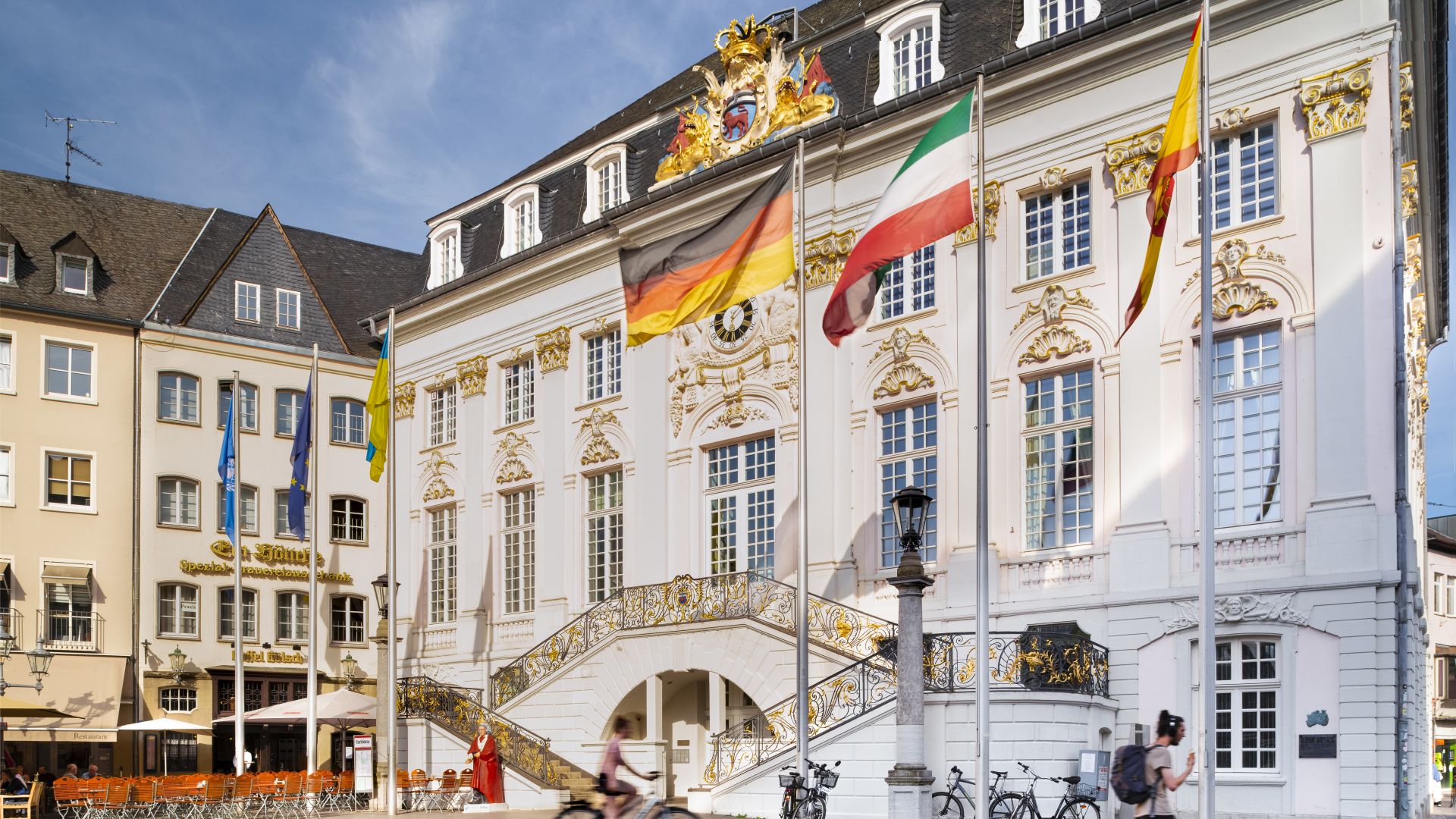Cities & Culture
University Cities: Youthful Vibes and Colorful Atmosphere
Apart from the academic reputation of the university, what defines a great university city? Certainly, a thriving sports, leisure, and pub scene. This, along with the presence of many young people from all over the world, makes a city appealing to both students and non-students alike.
Münster: Vibrant Life in Westphalia
 Münster: St. Lamberti Church
©DZT (Francesco Carovillano)
Münster: St. Lamberti Church
©DZT (Francesco Carovillano)
Looking for Münster’s top three attributes? Here we go! 1. University city (in addition to the University of Münster, there are eight other universities). 2. Setting for the "Tatort" TV serie - and one of the most popular at that. 3. Cycling city. No, THE cycling city of Germany. With over half a million Leezen bikes, it works out at almost two bikes per person! And it’s a great place for cycling, whether on the promenade (now declared a bike highway) around the beautiful and historic Old Town, around the central Aasee lake, or in the surroundingcountryside. Another advantage for cycling is the particularly short routes, often leading through lush greenery. There’s rarely more than five kilometres between the university buildings and landmarks such as St. Paul's Cathedral, Prinzipalmarkt, or the two LWL museums. The baroque palace is, incidentally, both the seat of the university and a tourist attraction. For students, the well-developed pub and restaurant scene is likely even more attractive. It's quite possible that the Kuhviertel and Hansaviertel neighborhoods contributed to Münster being awarded the LivCom Award as the "most livable city in the world" in 2004...
Freiburg: Highly Recommended
 Freiburg im Breisgau: Fischerau Street in the Old Town
©Lookphotos (Daniel Schoenen Fotografie)
Freiburg im Breisgau: Fischerau Street in the Old Town
©Lookphotos (Daniel Schoenen Fotografie)
The 230,000-inhabitant city in the Breisgau regio has some unique features to boast about: Germany's warmest climate, the country's oldest inn and an above-average number of students, mostly enrolled at the University of Freiburg (Albert Ludwig University), founded in 1457. As well as referring to the city’s strong commitment to the environment, the nickname “Green City” also reflects the many green spaces within the city and its surroundings. After all, the Black Forest is right next door. The overall recreational value? High! The city's timber-framed Old Town is crisscrossed by the famous "Bächle," a network system of waterways that enhances the already idyllic medieval atmosphere. The highlight, literally, is the Münster, 116 meters high, surrounded by the Historic Kaufhaus, Kornhaus, and the Alte Wachen – a perfect fusion of Gothic and Romanesque architecture.
Göttingen: City of Knowledge with Inventive Spirit
 Göttingen: Let the evening fade away at the Gänseliesel fountain
©DZT (Francesco Carovillano)
Göttingen: Let the evening fade away at the Gänseliesel fountain
©DZT (Francesco Carovillano)
Not a fairy tale: The Brothers Grimm worked as librarians and professors at the esteemed University of Göttingen (Georg-August-University Göttingen) from 1829 to 1837, which had an excellent reputation even back then. It’s not unlikely that they also had dealings there with the person who went on to become Reich Chancellor Otto Fürst von Bismarck... who was confined to the Karzer, the university's historical jail, for his "constant indolence," multiple times. Fortunately, these extreme measures are a thing of the past, and the city’s more than 30,000 students can now find guilt-free distraction in the pubs and restaurants of the old town, with its many half-timbered houses. There’s something else they’ll find there, too: the Gänseliesel fountain in front of the Old Town Hall, the emblem of this Lower Saxony town. This tradition stems from the practice of successful graduates (among them dozens of future Nobel laureates like immunologist Paul Ehrlich) climbing the fountain and giving the bronze figure, the Gänseliesel (goose girl), a kiss on the cheek. This ritual around the "most kissed girl in the world" would surely have pleased the Grimms...
Bonn: Ode to Joy
 Bonn: Old City Hall
©DZT (Francesco Carovillano)
Bonn: Old City Hall
©DZT (Francesco Carovillano)
In the over 2,000-year-old city of Bonn anyone can study history: at the House of History of the Federal Republic of Germany, while strolling along the Rhine where the former parliamentary and government buildings bear witness to its 41 years as the federal capital, and while wandering through the city center. Notable sights include the grand Münster and the Rococo-style Old Town Hall. But history can also be studied in real terms, alongside around 200 other subjects. No matter what you choose, as the Rheinische Friedrich-Wilhelms-Universität is spread across more than 350 buildings, including the Electoral Palace, students are guaranteed to experience even more of the city than just its numerous pubs in the Old Town. For example, more than 20 UN organisations are now based here, as are several successful DAX companies. Ludwig van Beethoven is ever-present as well. Monuments, streets, artworks, pharmacies, hotels, festivals, and orchestras all bear this brilliant composer's name. Naturally, so does his birthplace, one of the most visited musicians' museums globally.